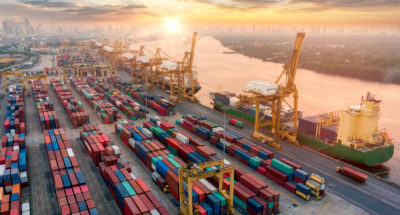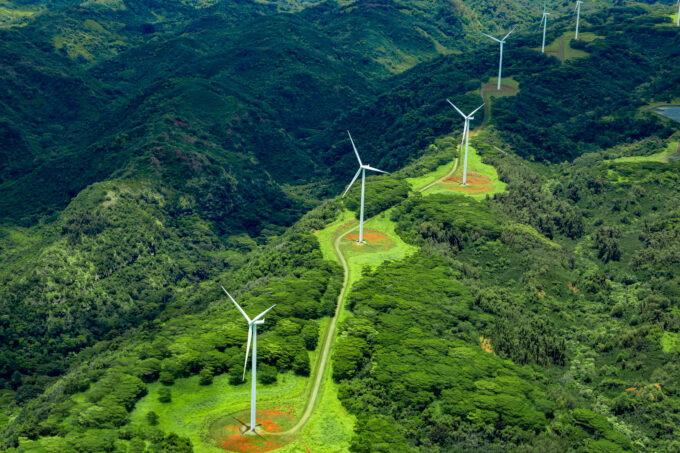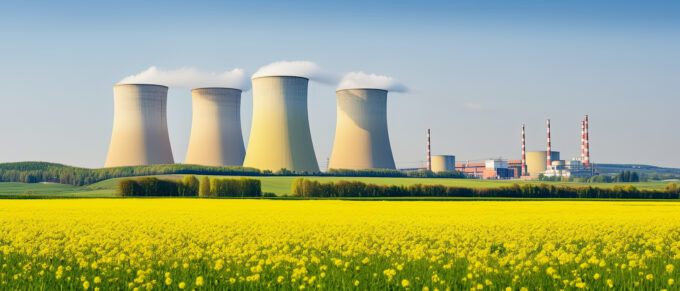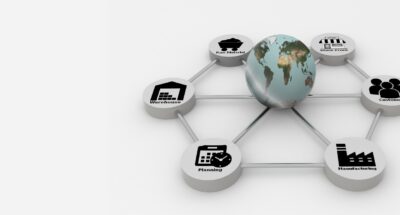
Building systemic resilience in supply chains
Turbulent times can leave businesses scrambling for measures to help them bounce back after disruption. But these actions may in fact increase overall supply chain fragility. ...

by Salvatore Cantale, Andrea Cantobelli Published 4 December 2023 in Sustainability • 8 min read
The energy landscape, once a simple commodity, has undergone a remarkable transformation, evolving into a complex network of choices with profound implications for businesses. In this in-depth exploration, we will uncover the multifaceted considerations corporations encounter when it comes to selecting energy sources.
We’ll delve into historical perspectives, the pursuit of carbon neutrality, financial implications, international supply chain dynamics, investment risks, self-implemented production solutions, the ever-evolving realm of energy technologies, leadership’s incentives for carbon reduction, and the growing sensitivity of investors to environmental, social, and governance (ESG) ratings.
Energy was once perceived as a straightforward commodity, with a focus on cost-effectiveness and reliability. Fossil fuels were the default choices due to their affordability and accessibility. The prevailing strategy was merely securing the cheapest source of energy, ensuring an abundant supply to sustain operations, be it a small company in an area served by a stable electrical system or a large factory in a developing country. But, in response to escalating environmental concerns and the looming specter of climate change, this perspective has undergone a paradigm shift.
For companies, energy is no longer simply a commodity. The way a company secures its carbon-neutral energy supply has become a fundamental part of its strategic planning and execution.
In our ecologically conscious era, businesses are compelled to reassess their energy source choices, not just to achieve carbon-neutral operations but to survive and thrive. The mandate for adopting a carbon-neutral business model, particularly for companies operating in countries signatory to the Paris Agreement, is no longer a mere option. Renewable energy sources, such as solar, wind, hydro, and geothermal power, have emerged as not only potent tools for carbon emissions reduction but also as guarantors of long-term sustainability. For some Western world enterprises, the idea of exclusively relying on renewable sources is no longer a utopian vision.
The transition to cleaner energy sources, however, cannot be accomplished by simply asking your electricity company to deliver only “green energy” to your meter. It normally carries substantial financial implications and requires a fair amount of planning to ensure it comes at a viable cost and, depending on the country, the required availability.
Renewable energy does, however, promise long-term savings through reduced operational expenses and insulation from volatile fossil fuel prices; conversely, its initial setup costs can be formidable. In regions where government incentives, tax credits, and subsidies exist, they often encourage the adoption of renewable energy. While companies eyeing a 100% renewable energy future must consider these incentives as part of their comprehensive business development plans, they also need to navigate the variability and natural discontinuity of these incentives through the years. In a nutshell: this inevitable transition necessitates a more strategic investment approach rather than a mere commodity choice.
Take, for instance, Google’s commitment to operating entirely on renewable energy on every grid they operate by 20301. The tech giant invests in wind and solar farms worldwide, supplementing their efforts with carbon offset initiatives in the meantime. This not only exemplifies a strategic shift towards cleaner energy sources but also clearly shows a carefully planned approach to it, which is executed across multiple years.

As more companies expand globally, they expose themselves to diverse regulatory landscapes and energy source limitations, de facto increasing the complexity of the situation they face in their effort towards carbon neutrality. Deciding to operate in a country is no longer linked only to the cost of labor, ease of access to talent, or the cost of land. The final cost of energy and the availability of CO2-neutral solutions play an increasingly key role.
Some nations have banned certain energy sources, citing safety concerns, while others have set ambitious renewable energy goals and crafted policies to promote them. Although the ultimate goal of these regulations is identical, their practical applications vary widely, depending on the geographical regions they encompass. These choices have very practical and direct implications for how a company does business internationally. Especially for those highly energy-demanding sectors like manufacturing, metal industries in general, or even large data centers or AI solutions providers, the cost of the energy bill can be the difference between profit and loss.
For instance, consider the stark differences in strategy between France and Germany, particularly concerning the use of nuclear power. France, with its strong reliance on nuclear, stands in stark contrast to Germany’s energy transformation, known as the “Energiewende.” While France’s nuclear strategy has long been a linchpin of its energy security, Germany embarked on an ambitious journey to phase out nuclear power, driven by environmental concerns and a commitment to a greener energy future.
This shift has profound economic implications for Germany, as it necessitates significant investments in alternative energy sources and the redevelopment of its energy infrastructure. Moreover, the country’s rejection of nuclear power introduces challenges related to energy security and grid stability. In response, German companies are compelled to adapt their energy strategies to conform to stringent regulations and integrate renewable energy sources. In the pursuit of cleaner energy, they face both substantial upfront costs and ongoing adjustments in their operational models. The sudden increase in gas prices due to the Russia-Ukraine war didn’t help to smooth the transition toward a fully renewable fed grid.
Operating internationally in this new energy-related context entails understanding and navigating the implications of governmental/political energy choices. These choices come with different country-specific cost and risk scenarios which need to be constantly assessed and managed.
Still within Europe, Italy, a country devoid of nuclear energy, is gradually transitioning to a utility-scale renewable energy framework, leveraging its geographic suitability for both solar in the south and hydropower in the north. This has the advantage of keeping energy costs reasonable and still allows a steady reduction in CO2 emissions.
Either of these completely different scenarios comes with a different energy cost structure for the business and a different incentive model, dramatically affecting the way companies operate and secure their energy supply. Within such different scenarios, companies must adapt their energy strategies to conform to local regulations, exploit available resources, and maintain cost competitiveness. Additionally, they must remain vigilant regarding the political choices of the countries they operate in as well as the associated risks, including the availability (or absence) of subsidies and incentives to the use of low-carbon energy sources or the establishment of self-implemented energy production systems.

Many enterprises do indeed contemplate self-implemented production solutions, such as on-site solar installations and microgrids, to gain control over their energy sources. While these solutions bestow energy independence and long-term cost savings, they often demand substantial initial investments in infrastructure and technology. Companies must weigh these benefits against upfront costs, evaluate available subsidies and incentives, and keep an eye on evolving technological developments.
Self-implemented production solutions, where possible, can be an effective way to mitigate cost fluctuation risks. But these come with increased complexity and the need to evaluate how future-proof technical solutions are.
Microsoft’s significant investments in self-implemented production solutions, including a substantial solar energy portfolio, have not only reduced its carbon footprint but also trimmed energy costs. However, the ever-changing energy landscape introduces new variables. Advances in energy storage, grid management, and renewable energy generation continually reshape the industry. Companies that embraced solar PV technology earlier may find it economically convenient to revamp their systems well before the end of their expected lifespan. This reduction in price and increase in efficiency renders substitution an attractive option, resulting in operational cost reduction or even a new revenue stream. The integration of advanced grid management technologies also enhances the reliability, efficiency, and integration of renewable energy sources, enabling a higher share of renewable sources on the grid.
As sustainability becomes an integral aspect of corporate strategies, many companies are turning to CO2 offset solutions as a means to mitigate their environmental impact. While these initiatives aim to demonstrate a commitment to carbon neutrality, even in these cases there are significant business consequences that organizations must consider.
Companies adopting CO2 offset solutions can enhance their reputation and brand image, appealing to environmentally conscious consumers and investors. However, aside from the obvious cost implications in setting up these CO2 offset solutions (anything from buying negative CO2 certificates to planting trees) any discrepancy between proclaimed sustainability goals and actual business practices may lead to accusations of greenwashing. Authenticity and transparency are crucial, as consumers and stakeholders increasingly scrutinize corporate environmental claims. This implies a tight control of the processes aimed at offsetting carbon emissions, and therefore again the necessity of properly managing these solutions.
This reduction in price and increase in efficiency renders substitution an attractive option, resulting in operational cost reduction or even a new revenue stream.
In navigating the intricate energy landscape, companies face a transformative journey, driven by the imperative of carbon neutrality and the rise of renewable energy. The transition demands strategic, long-term investments amid the allure of reduced operational expenses.
Internationally, diverse regulatory landscapes and geopolitical decisions, exemplified by the contrast between France’s nuclear reliance and Germany’s Energiewende, underscore the impact on businesses’ energy cost structures. Recent geopolitical events, such as the surge in gas prices, add complexity to the global dance between politics and sustainable energy transitions.
Self-implemented production solutions, like Microsoft’s solar energy portfolio, offer control over energy sources but require ongoing adaptation to an evolving landscape. The integration of CO2 offset solutions introduces reputational benefits and cost implications, emphasizing the need for authenticity in environmental claims.
In conclusion, the path to a sustainable energy future requires a delicate balance of strategic investments, adaptation to regulations, and a genuine commitment to environmental responsibility.

Professor of Finance at IMD
Salvatore Cantale is Professor of Finance at IMD. His major research and consulting interests are in value creation, valuation, and the way in which corporations structure liabilities and choose financing options. Additionally, he is interested in the relation between finance and leadership, and in the leadership role of the finance function. He directs the Finance for Boards, Business Finance, and the Strategic Finance programs as well as the Driving Sustainability from the Boardroom program and the newly designed Bank Governance program.

Energy expert
Andrea is a multi-decade experienced leader in the energy sector, with a dynamic and diverse career navigating various facets of power generation. With former key leadership roles at GE, Alstom and IMI Critical Engineering, Andrea has spearheaded transformative initiatives in global operations for virtually any type of energy solution. A visionary in energy strategy and execution, Andrea has consistently driven innovation across diverse energy landscapes, solidifying a legacy of expertise in the ever evolving energy market.

25 July 2024 • by Amanda Williams, Gail Whiteman, Knut Haanaes in Supply chain
Turbulent times can leave businesses scrambling for measures to help them bounce back after disruption. But these actions may in fact increase overall supply chain fragility. ...

4 July 2024 • by Ralf W. Seifert, Philip Sieber-Gasser in Supply chain
The sheer complexity of trade regulation and the risk of non-compliance mean companies are missing out on billions in tariff savings from Free Trade Arrangements (FTA) in their global supply chains. New...

24 June 2024 • by Carlos Cordon in Supply chain
In an era of unpredictability, businesses must take many more strategic decisions about supply chain management, say IMD’s Carlos Cordon and supply chain adviser Tariq Farooq ...

13 June 2024 • by Suzanne de Treville in Supply chain
Many executives recognize the value of local manufacturing but struggle to shake off the view that low-cost production is better for the bottom line. Exploring their options through simulations and competitive games...
Explore first person business intelligence from top minds curated for a global executive audience